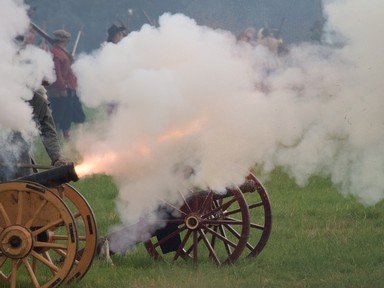
More than Just Hastings Trivia Quiz
Battles on (or adjacent to) British Soil
The Battle of Hastings in 1066 is well known for the victory of William the Conqueror, whose invasion from France was the last successful invasion of Britain in the millennium.
A collection quiz
by spanishliz.
Estimated time: 3 mins.